Originally published on 10 February 2020 at "Rubryka"
According to a nationwide survey held in 2015-2018, corruption is ranked third among the most serious problems in Ukraine. 93.7% of respondents believe so.
Even though a lot of anticorruption initiatives were launched in Ukraine since 2014 and most of them can be considered successful, corruption still exists in our country at various levels. According to the 2019 Corruption Perceptions Index recently published by Transparency International, Ukraine’s ranking has worsened: the country lost two points and went down to the 2017 level.
But speaking about the local situation, the dynamics of change are positive: according to the Transparency Rating of 100 Ukrainian Cities released annually by Transparency International Ukraine, the overall degree of transparency at the largest bodies of local self-government in Ukraine in 2018 has increased by 12%. The updated rating for 2019 will be published in the nearest future.
So, what can local authorities and citizens do to overcome corruption at local level and ensure integrity of their cities?
Integrity = anticorruption
The term “integrity” is now used more and more often, in particular, when we are talking about anticorruption activity, but Ukrainian legislation contains no definition of this term.
Transparency International defines “integrity” as a behavior and actions compatible with moral or ethical principles and standards of people and institutions combating corruption.
City councils without corruption = “Integrity Cities”
Integrity Cities project supports Ukraine’s anticorruption efforts, because they help promote economic growth and strengthening of democracy. The purpose of this project is to minimize corruption risks and increase transparency and accountability at local level in Zhytomyr, Mariupol, Nikopol, Chervonohrad and Chernivtsi, and to engage citizens and civil society organizations in the decision making process.
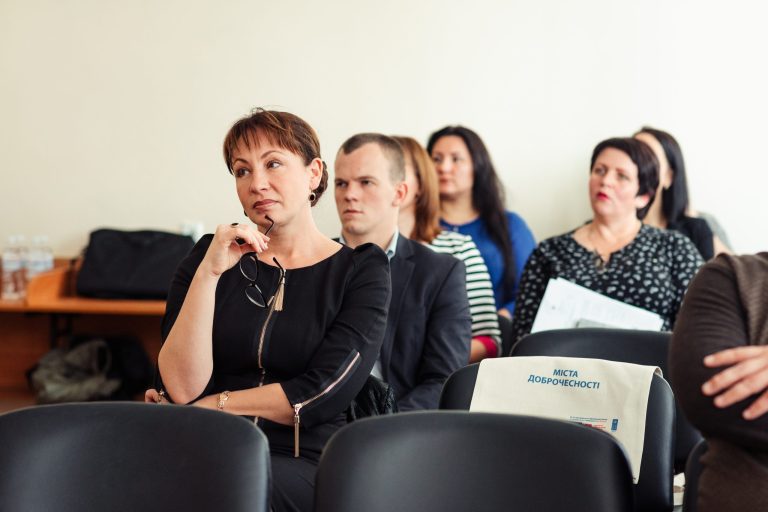 Photo: UNDP in Ukraine
Photo: UNDP in Ukraine
Instruments of integrity
To achieve the desired result in combating corruption at local level, we recommend using five instruments which are already used within the project’s framework and have already proved their effectiveness:
1. Corruption risk assessment
Corruption risk assessment is a complex analysis of the probability of corruption at bodies of local self-government.
To perform the assessment, the local council’s areas of activity prone to heightened corruption risks (which can include, in particular, public procurements, architecture and urban planning, land relations, management of communal immovable property, etc.) must be identified first. The next step is to develop a methodology setting out work procedures and defining corruption risk assessment indicators.
When performing an assessment, you should analyze the legal framework regulating the city council and its executive bodies and information available from open sources (the city council’s official website, registers, mass media publications), and interview key partners and responsible personnel in the assessed areas of activity.
After making an assessment, it would be a prudent decision for the city council to prepare a report containing a detailed description of identified corruption risks and recommendations on how to eliminate them. Subsequently, this report could be used when preparing a Municipal Integrity Plan.
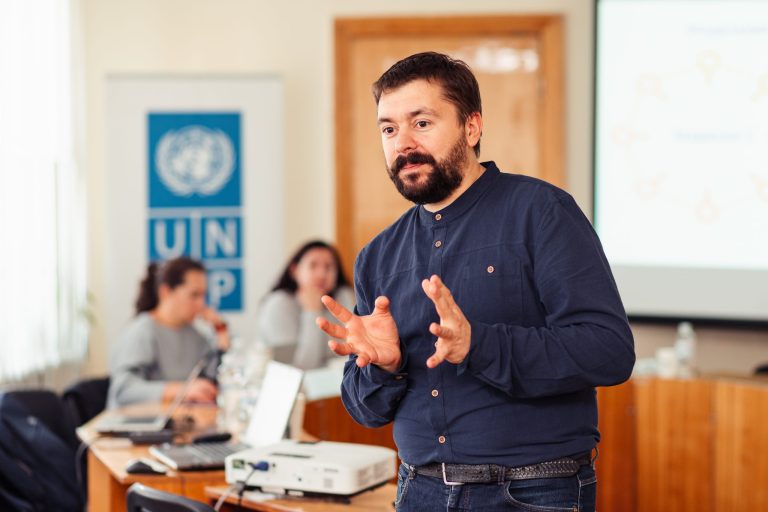 Photo: UNDP in Ukraine
Photo: UNDP in Ukraine
2. Municipal Integrity Plan
A Municipal Integrity Plan is a city council’s strategic document developed to effectively combat and prevent corruption; it is based on an assessment of corruption risks in the city council’s activity.
In practice, working groups established in municipalities and comprised of local self-government officials, members of the city council and representatives of the broad public proved their effectiveness when developing the Plans.
In order for a Plan to be successfully implemented, it must not only contain information about identified corruption risks and measures of minimizing these risks but also define persons responsible for implementing these measures, deadlines, resources and clear fulfillment indicators.
In addition, in order to ensure continuous and quality management of corruption risks in the city council’s activity, a Municipal Integrity Plan must define a clear mechanism of implementing the Plan, a procedure of monitoring, evaluating and revising the Plan, and grounds for making changes in it.
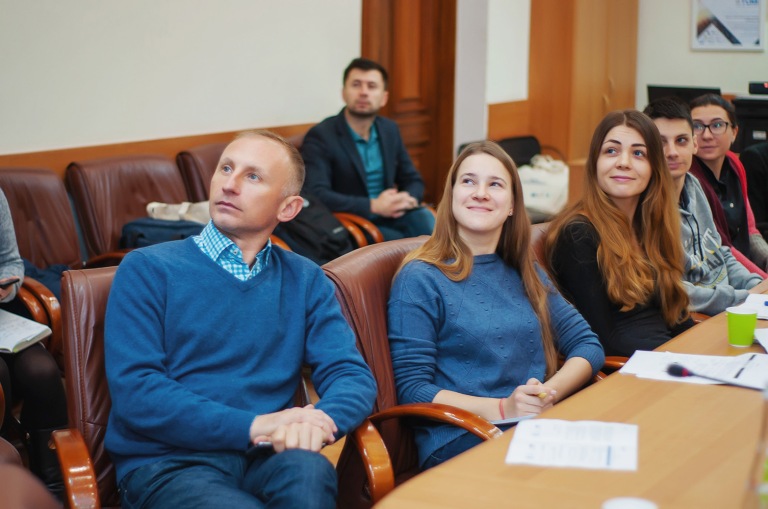 Photo: UNDP in Ukraine
Photo: UNDP in Ukraine
3. Local democracy instruments
Local democracy instruments promote transparency and publicity of public administration, allowing all parties to voice alternative proposals. The engagement of citizens in the decision making process greatly minimizes corruption risks and strengthens public trust.
One of these instruments is public hearings. Since this matter is insufficiently regulated by legislative framework, it is important to analyze local procedures of initiating and organizing public hearings and their legal consequences; ensure unimpeded public access to discussions and provide recommendations regarding better-quality normative regulation of the organization of public hearings in municipalities.
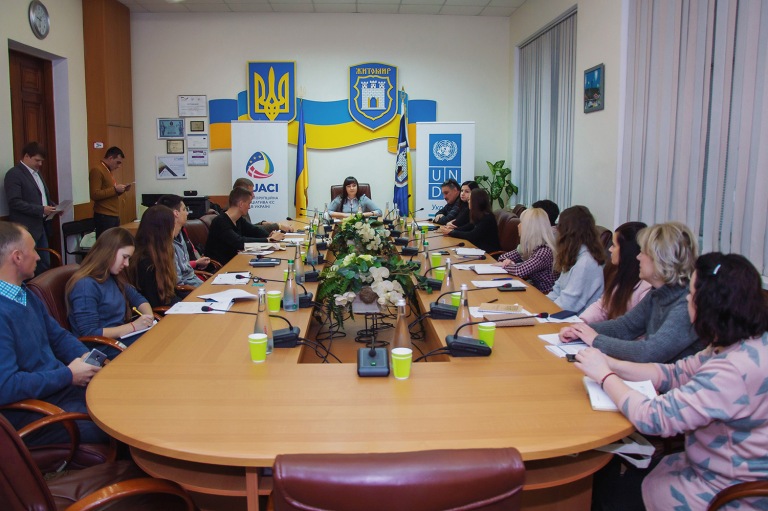 Photo: UNDP in Ukraine
Photo: UNDP in Ukraine
4. Electronic reception office
An electronic reception office is a system designed to improve online communication between citizens and local authorities; it allows to make online appointments with public officials, and accumulate and systemize information for city authorities as regards the responses to requests and inquiries from citizens.
Before implementing this system, you must evaluate the existing local online services for citizens, assess their integrability, and determine required resources for implementation of new or improvement of existing components of electronic reception office in every city of integrity.
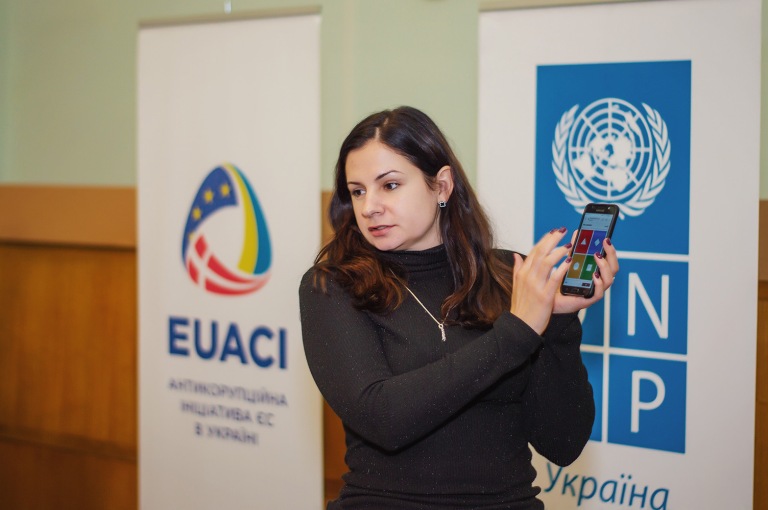 Photo: UNDP in Ukraine
Photo: UNDP in Ukraine
5. Professional training
Organization of skill improvement trainings is important for local self-government officials who want to peruse legislative changes and learn about the best Ukrainian and foreign practices.
These trainings must combine lectures, situation analyses and interactive seminars. This is the kind of trainings launched by Cities of Integrity project, which are aimed to improve the knowledge, skills and abilities of local self-government officials in combating corruption, and ensure effective implementation of Municipal Integrity Plans. At the same time, these trainings discussed the use of modern instruments of electronic governance in municipalities and organization of public relations via local democracy instruments (in particular, public hearings).
For the duration of this project, the recommended instruments have been successfully implemented and used. However, in order for the process of combating corruption to continue in all areas and at all levels of public administration, one should not forget that citizens can and must take an active stance in this process, because they are able to influence decision making. Therefore, coordinated joint efforts of local authorities and civil society represent a no less important and efficient instrument.
For your information: Integrity Cities project is implemented by the EU Anti-Corruption Initiative (EUACI) in the partnership with the UNDP, and financed by the European Commission and the Danish Foreign Ministry.
By Marta Nykolayeva

 Locations
Locations




